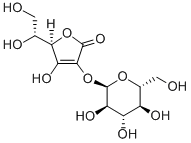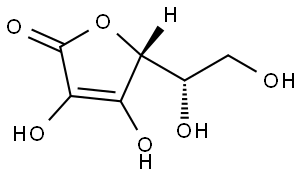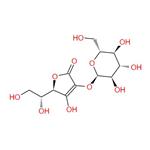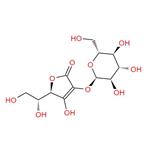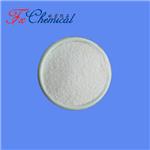Description
Ascorbyl glucoside is a natural active substance containing Vitamin C structure, but it is stable. Ascorbyl glucoside can effectively inhibit formation of melanin, dilute the skin color, reduce age spots and freckles pigmentation.
Ascorbic Acid 2-Glucoside(AA-2G) was originally developed as a quasi-drug cosmetic product in Japan to lighten the overall tone of the skin and reduce the pigmentation in age spots and freckles. Further research has shown other dramatic benefits and today AA-2G is used all over the world-not only for whitening but also for brightening dull looking skin, reversing the effects of aging, and in sunscreen products for protection.
Uses
2-O-alpha-D-Glucopyranosyl-L-ascorbic acid reduce the free radicals that result from UV irradiation of the skin, and significantly reduce cell damage and photo-aging. It also promotes collagen synthesis. It can function as an antioxidant.
Uses
According to the manufacturer, ascorbyl glucoside functions as a time-release version of vitamin C (ascorbic acid), and therefore is more stable than traditional ascorbic acid. It is considered to have skin-lightening and anti-hyperpigmentation properties, thanks to an ability to suppress melanin production. Its skinbrightening capacities are attributed to an apparent ability to reduce pre-existing melanin levels (as in the case of freckles or age spots). Ascorbyl glucoside could also help promote collagen synthesis and help reduce skin inflammation. It is found in antiaging, anti-wrinkle, and sun care products.
Definition
ChEBI: L-Ascorbic acid-2-glucoside is a glycoside.
General Description
Ascorbyl glucoside is a stable form of vitamin C combined with glucose. When properly formulated and absorbed into skin, it breaks down to ascorbic acid (pure vitamin C).2-O-a-D-Glucopyranosyl-L-ascorbic Acid is a useful cosmetic gel and skin cleanser. Once absorbed, its breakdown to vitamin C is gradual, creating what’s known as a reservoir effect within skin. This leads to longer-lasting benefits.
Biochem/physiol Actions
2-O-a-D-glucopyranosyl-L-ascorbic acid or ascorbyl glucoside functions as a skin whitener and radical scavenger in cosmetics. It is responsible for the bleaching action of bleaching cosmetics. This compound is activated in a manner identical to that of vitamin C. The enzyme present in the epidermal basal membrane, ascorbyl phosphatase, slowly converts 2-O-a-D-glucopyranosyl-L-ascorbic acid into vitamin C, thereby maintaining a high vitamin C level in skin throughout the day.
Side effects
While pure vitamin C can sting and cause mild irritation, there aren't any side effects we know of with ascorbyl glucoside, says Nussbaum. Still, it is an active ingredient for sure, so you can always test out a small amount elsewhere on your skin to make sure you can tolerate it.
